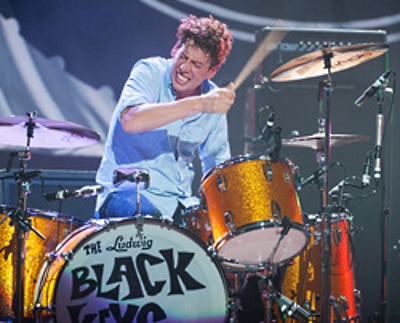
Mics designed for the kick drum usually have that characteristic built in.
If the kick drum does not have a hole in the front head, just mike the front head and boost around 2 kHz to 4 kHz to add attack if needed.
A popular microphone design for kick drum is a large-diameter, cardioid dynamic type with an extended low-frequency response.
Some mics are designed specifically for the kick drum, such as the AKG D112, Audio-Technica AT AE2500, Shure Beta 52A, and the Electro-Voice RE320, which has a curve that’s switchable to being optimized for kick drum applications.
Finally, when miking drums on stage, you don’t want a forest of unsightly mic stands and booms. I suggest “banquet style” mic stands and short mic holders that clip onto drum rims and cymbal stands. Another option is to use mini drum mics with built-in clamps and goosenecks.
Drum miking can be simple or complex. As with all things audio, it depends.
One thing that really helps is being as familiar with the sound of as many aspects of the drum kit as possible. This means a lot of listening to a wide range of styles and different types of players.
Those who play very hard with heavy sticks present challenges that are quite different from those who play more quietly, or with a greater dynamic range.
The bottom line is that the drum sound can enhance or degrade an entire mix, so be sure to pay it due diligence.
